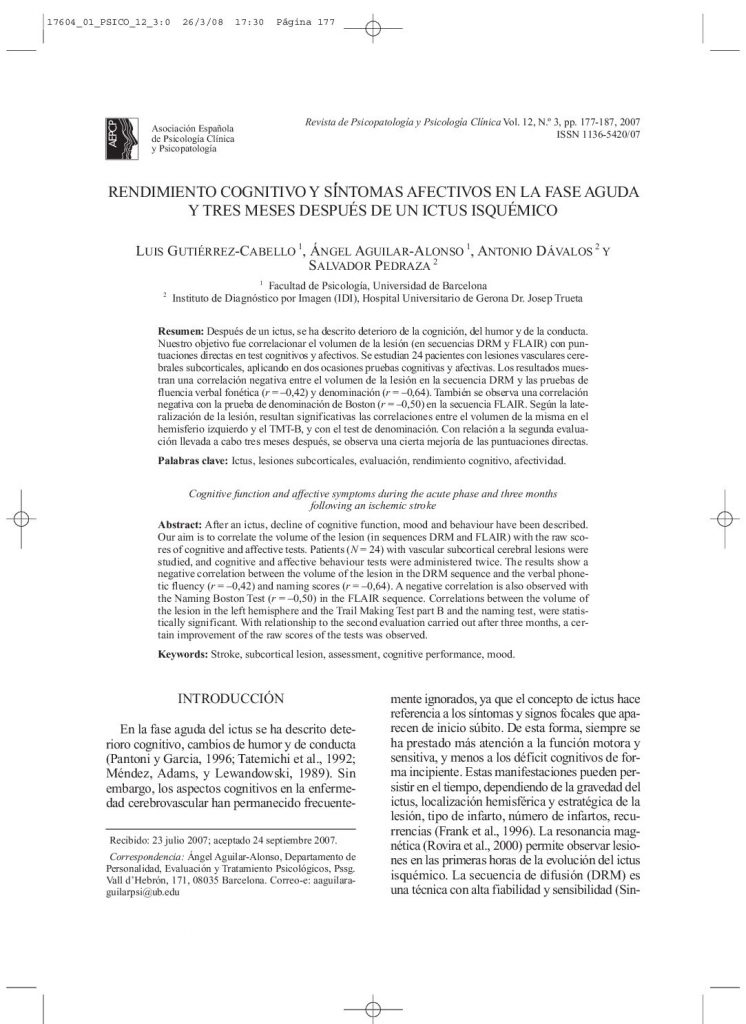Rendimiento cognitivo y síntomas afectivos en la fase aguda y tres meses después de un ictus isquémico.

- Subtipos de ansiedad social en población adulta e infanto-juvenil: Distinción cuantitativa versus cualitativa.
- Propiedades psicométricas de la Escala de Miedo a la Evaluación Negativa versión breve (BFNE) en muestra clínica.
- Rendimiento cognitivo y síntomas afectivos en la fase aguda y tres meses después de un ictus isquémico.
- Cuestionario de afrontamiento del estrés (CAE): Validación en una muestra mexicana.
- Relación de la esquizotipia psicométrica con variables emocionales y socioambientales.
- Información sobre criterios de calidad de la Revista de Psicopatología y Psicología Clínica.
After an ictus, decline of cognitive function, mood and behaviour have been described. Our aim is to correlate the volume of the lesion (in sequences DRM and FLAIR) with the raw scores of cognitive and affective tests. Patients (N = 24) with vascular subcortical cerebral lesions were studied, and cognitive and affective behaviour tests were administered twice. The results show a negative correlation be-tween the volume of the lesion in the DRM sequence and the verbal phonetic fluency (r = -0,42) and naming scores (r = -0,64). A negative correlation is also observed with the Naming Boston Test (r = -0,50) in the FLAIR sequence. Correlations between the volume of the lesion in the left hemisphere and the Trail Making Test part B and the naming test, were statistically significant. With relationship to the second evaluation carried out after three months, a certain improvement of the raw scores of the tests was observed.
Después de un ictus, se ha descrito deterioro de la cognición, del humor y de la conducta. Nuestro objetivo fue correlacionar el volumen de la lesión (en secuencias DRM y FLAIR) con puntuaciones directas en test cognitivos y afectivos. Se estudian 24 pacientes con lesiones vasculares cerebrales subcorticales, aplicando en dos ocasiones pruebas cognitivas y afectivas. Los resultados muestran una correlación negativa entre el volumen de la lesión en la secuencia DRM y las pruebas de fluencia verbal fonética (r = -0,42) y denominación (r = -0,64). También se observa una correlación negativa con la prueba de denominación de Boston (r = -0,50) en la secuencia FLAIR. Según la lateralización de la lesión, resultan significativas las correlaciones entre el volumen de la misma en el hemisferio izquierdo y el TMT-B, y con el test de denominación. Con relación a la segunda evaluación llevada a cabo tres meses después, se observa una cierta mejoría de las puntuaciones directas.



